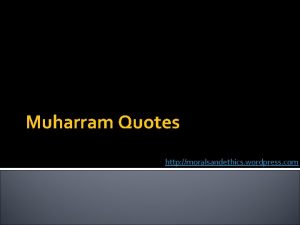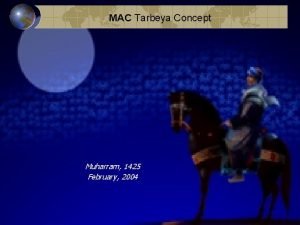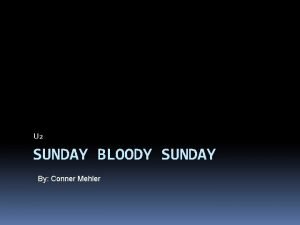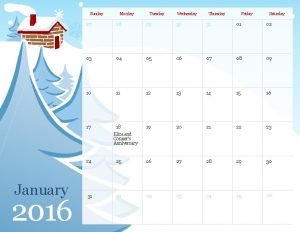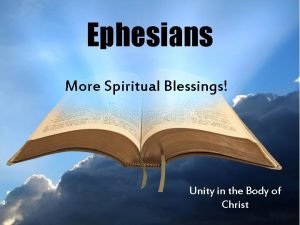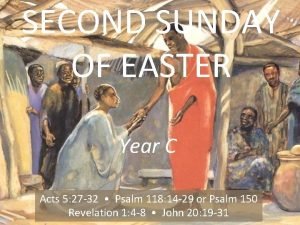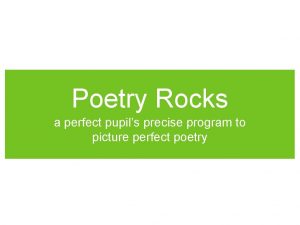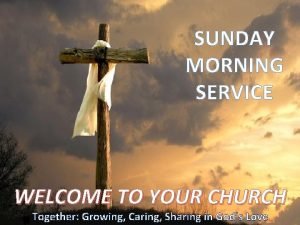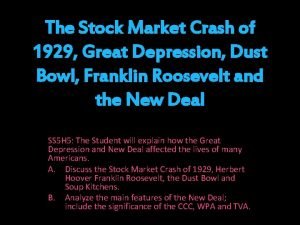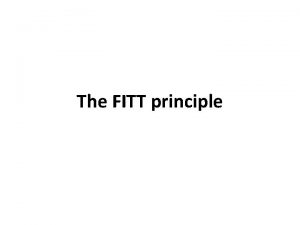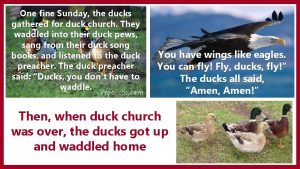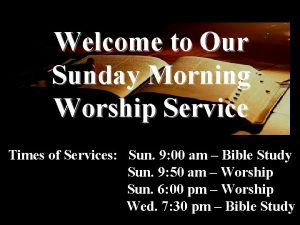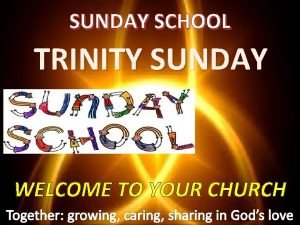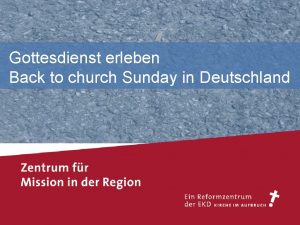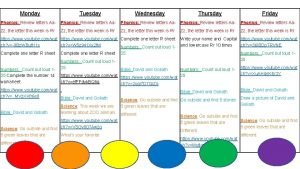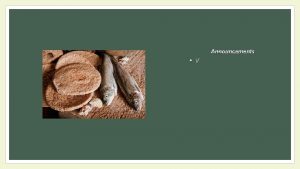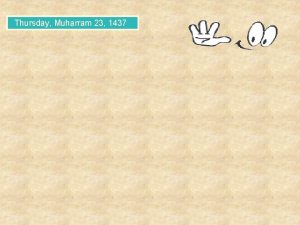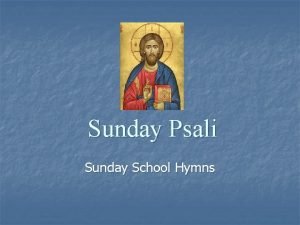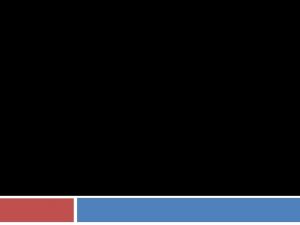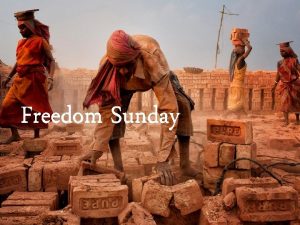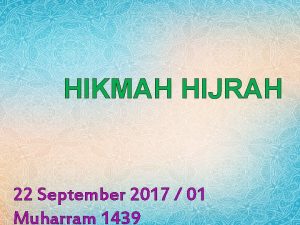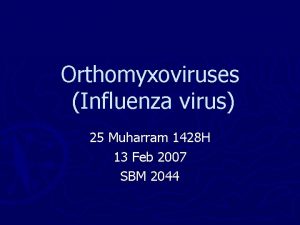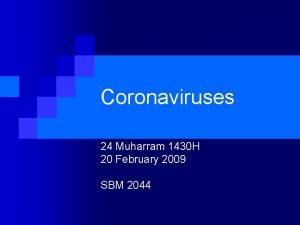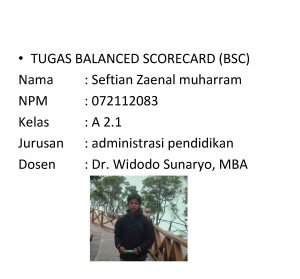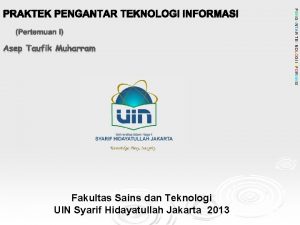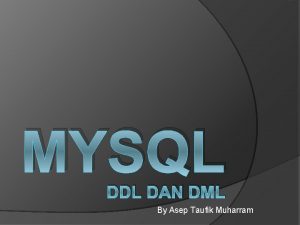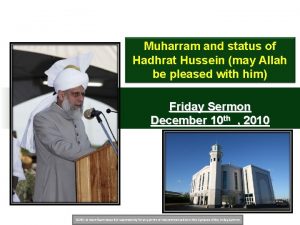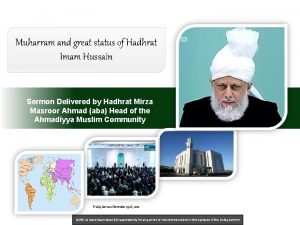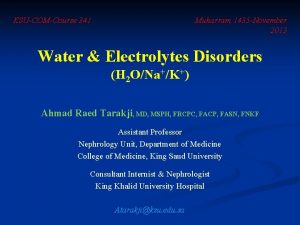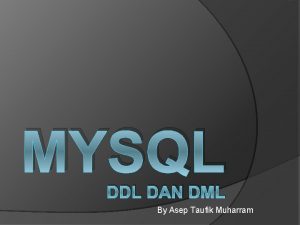Sunday Muharram 11 1437 Sunday Muharram 11 1437


















- Slides: 18

Sunday, Muharram 11, 1437

Sunday, Muharram 11, 1437 Unit: 3 Lesson: 6

Sunday, Muharram 11, 1437

Sunday, Muharram 11, 1437 At the end of the lesson, you’ll be able to: 1. Differentiate between a note and the other kinds of writing. 2. Know the purpose of making notes. 3. Know the basics of making a note. 4. Know the meaning of prepositions. 5. Apply the prepositions in a suitable place. 6. Make notes.

Sunday, Muharram 11, 1437 Before writing a note you’ve to ask yourself some different questions: What are notes? Why do we use note form? What words do we need? What can we leave out?

Sunday, Muharram 11, 1437 1. Notes help you to remember the information you have gathered. 3. Lengthy lessons can be condensed in to short relevant pieces by making notes. 2. Notes come in handy for making quick revision before exams. 4. Notes help in understanding the texts better.

Sunday, Muharram 11, 1437 Put in your mind that, we have different kinds of note. Give me examples for. .

Sunday, Muharram 11, 1437 no r u o y ng i t i r w rt a t s e n: r o o i f t e a B m • or f n i g n followi te he t n o s , focu

Sunday, Muharram 11, 1437 How to make notes Step 1 The students are required to read the passage to get a gist of the passage, to know what it is all about, or what theme is. Step 2 The main idea or the central theme of the passage should be found out. Step 3 The important points related to the main theme are noted. Step 4 Add the sub-points which supplement the main points. There is no need to give examples. Step 5 Pay attention to the way you would like to present the notes, There is a proper format for note making you have to follow it & make your notes in the proper format. Step 6 Use abbreviations wherever necessary. Step 7 Use proper indentation to present the notes. -

Sunday, Muharram 11, 1437 TAKING NOTES IN CLASS • To write a little faster use abbreviations & symbols to record the information. W/ with W/O without p. Page < less than b/4 before = equals % percent Vs versus C/o care of

Sunday, Muharram 11, 1437 1) Capitalized initial information: E. g. U. N. for United Nation M. L. A. B. Sc M. P. 2) Taking the first two letters of the words : Sc. Science Practical Education 3) Takings the first and the last two letters of the word: rdng admn Administration pds Periods rg Regarding 4) Symbol that are universally recognized: E. g : Therefore E. g : For example 5) Arithmetic symbol-% percentage + ive positive <> greater than or less than

Sunday, Muharram 11, 1437

Sunday, Muharram 11, 1437 The work of the heart can never be interrupted The heart’s job is to keep oxygen rich blood flowing through the body. All the body’s cells need a constant supply of Oxygen, especially those in the brain. The brain cells like only four to five minutes after their oxygen is cut off, and death comes to the entire body. The heart is a specialized muscle that serves as a pump. This pump is divided into four chambers connected by tiny doors called valves. The chambers work to keep the blood flowing round the body in a circle. At the end of each circuit, veins carry the blood to the right atrium, the first of the four chambers 2/5 oxygen by then is used up and it is on its way back to the lung to pick up a fresh supply and to give up the carbon dioxide it has accumulated. From the right atrium the blood flow through the tricuspid valve into the second chamber, the right ventricle. The right ventricle contracts when it is filled, pushing the blood through the pulmonary artery, which leads to the lungs – in the lungs the blood gives up its carbon dioxide and picks up fresh oxygen. Then it travels to the third chamber the left atrium. When this chamber is filled it forces the blood through the a valve to the left ventricle. From here it is pushed into a big blood vessel called aorta and sent round the body by way of arteries. Heart disease can result from any damage to the heart muscle, the valves or the pacemaker. If the muscle is damaged, the heart is unable to pump properly. If the valves are damaged blood cannot flow normally and easily from one chamber to another, and if the pacemaker is defective, the contractions of the chambers will become un-coordinated. Until the twentieth century, few doctors dared to touch the heart. In 1953 all this changed after twenty years of work, Dr. John Gibbon in the had developed a machine that could take over temporarily from the heart and lungs. Blood could be routed through the machine bypassing the heart so that surgeons could work inside it and see what they were doing. The era of open heart surgery had began.

Sunday, Muharram 11, 1437 In the operating theatre, it gives surgeons the chance to repair or replace a defective heart. Many parties have had plastic valves inserted in their hearts when their own was faulty. Many people are being kept alive with tiny battery operated pacemakers; none of these repairs could have been made without the heart – lung machine. But valuable as it is to the surgeons, the heart lung machine has certain limitations. It can be used only for a few hours at a time because its pumping gradually damages the bloods cells. On the basis of your reading of the above passage make notes on it, using headings & Sub headings. Use recognizable abbreviations wherever necessary (minimum 4). Use a format you consider suitable. Supply an appropriate title to it.

Title: - Heart Sunday, Notes: i) Function of Heart a) Vital for living (i) never stop wrkg. b) Supplies oxygen rich blood to diff. Parts of the body. ii) Structure of the heart a) div. 4 chambers connected by valves b) Blood purified in the lungs. c) Arteries carry pure blood to diff. Part of the body. iii) Heart disease – cause a) Weak muscles b) Defective valves c) Defective pace maker iv) History of open heart Surgery. a) 1953 – Dr. Gibbon inv. Heart lung machine b) Blood could pass through the machine c) Enabled open heart surgery d) Limitation (i) can be used only for a few hrs. at a time. (ii damages flood cells. Abbreviation used Different inv. Invented div. Division chamb. Chambers hist. History hrs. Hours Muharram 11, 1437

Sunday, Muharram 11, 1437 Summary: The heart is a vital organ of the body, which never stop working. It supplies oxygen rich blood to all parts of the body. It is divided into four chambers inter connected by valves. Blood is purified in the lungs and arteries carry it to different parts of the body. Heart disease has various cause such as weak muscles defective valves or a defective pace maker. The era of open-heart surgery began in 1953 when Dr. Gibbon developed the heart lung machine. Replacement of valves and other areas of a damaged heart is now possible.

Thursday, Muharram 11, 1437 s ’ t n e d u t S ( k o o b Open your … 6 2 e g a p n o ) k o Bo

Sunday, Muharram 11, 1437
 Muharram quotes
Muharram quotes Muharram 2004
Muharram 2004 Trinity activities for sunday school
Trinity activities for sunday school Brandi mehler
Brandi mehler Sunday monday 27
Sunday monday 27 Sunday spiritual blessings
Sunday spiritual blessings Acts 5 27 32
Acts 5 27 32 Poem about minerals and rocks 3 stanza
Poem about minerals and rocks 3 stanza Sunday morning service images
Sunday morning service images Black sunday stock market crash
Black sunday stock market crash Refers to the variety of training a performer undertake
Refers to the variety of training a performer undertake One fine sunday
One fine sunday What did you do over the weekend
What did you do over the weekend Welcome to our sunday service
Welcome to our sunday service Holy trinity sunday 2021
Holy trinity sunday 2021 Back to church
Back to church Sunday monday letters
Sunday monday letters Palm sunday welcome
Palm sunday welcome Opening prayer
Opening prayer
